In this post, we are going to show you how to move Program files from an SSD drive to an HDD drive.
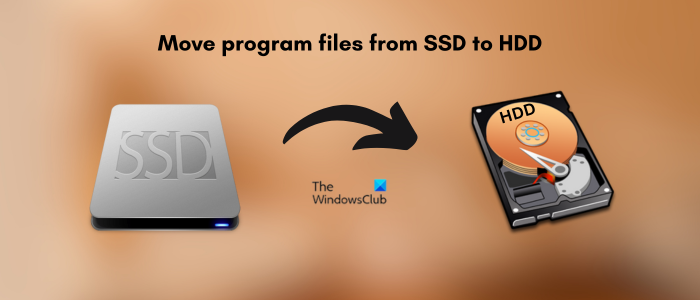
SSDs (Solid State Drives) are faster, durable, smaller, and consume less drive. On the other hand, HDDs (Hard Disk Drives) are cheaper with a larger storage capacity. So, many users prefer using a combination of SSD and HDD to achieve greater system performance while saving the cost. Now, if your SSD drive has become full and you want to move some installed software to your HDD drive, this guide will help you how to do that.
Can I just move files from SSD to HDD?
Yes, you can easily move files from SSD to HDD. If you want to move your personal files and folders, use the simple and traditional Cut and Paste (CTRL+X and CTRL+V) or Copy and Paste (CTRL+Cand CTRL+V) method. This method is convenient when you have a small number of files or personal data files in smaller sizes to move. If you want to move large files like videos and more from SSD to HDD, you can use a third-party fast copy software. TeraCopy, FastFileCopy, File Fisher, and ExtremeCopy are some free fast file copy applications that you can try.
Can you move Program files to HDD?
Yes, you can move and relocate Program files from one to another HDD drive. This is useful when you want to free up some space on your primary drive. It helps in enhancing the overall performance of your system. You can also avoid low disk space errors and warnings by moving programs from one drive to another.
How to move Program files from SSD to HDD in Windows 11/10
You can move your installed software or games from an SSD drive to an HDD drive. However, you can’t simply copy/cut and paste the program folder from one drive to another. There is a specific procedure that you need to follow. First, you need to copy the installation directory from SSD to HDD. Second, you need to create a symbolic link between directories. Here are the exact steps to do so:
- Open Notepad.
- Copy the path of the source directory.
- Paste the path in Notepad.
- Repeat steps 2 and 3 for the path of the target directory.
- Open the Command Prompt as an administrator.
- Enter a command to move the source program folder.
- Make a symbolic link between directories.
Note: Before proceeding, you may consider creating a system restore point to be on the safer side. In case of any inaccuracy or fault, you can restore your PC to an earlier and healthy state. So, create a system restore point and follow the below steps:
First of all, open the Notepad app.
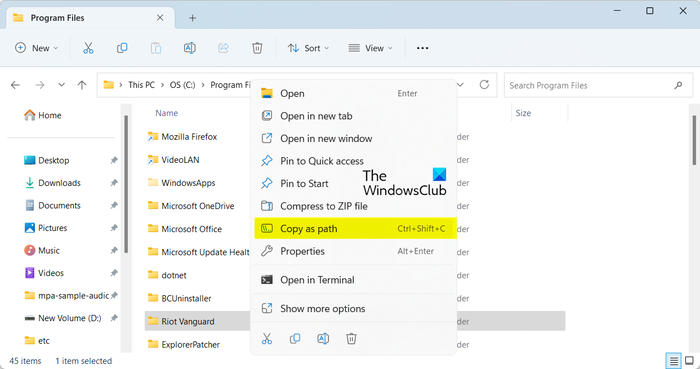
Next, go to your SSD drive and copy the path of the source directory; right-click on the folder and choose the Copy as path option from the context menu. Or, press the Ctrl+Shift+C hotkey.
After that, open Notepad and paste the copied path using Ctrl+V. Basically, we need to note down the exact path of the source directory to avoid any errors or issues later.
Now, you need to repeat the above steps for the target folder where you want to move the program files. Move to your HDD drive, create a folder for moving the new folder, and copy its path using Ctrl+Shift+C.
Read: How to transfer Files from Old Hard Drive to new Windows?
Next, open the Command Prompt with administrator rights. For that, press Win+S to open Search and type cmd in the search box. Hover the mouse over the Command Prompt app and choose the Run as administrator option.
Read: How to transfer files & data from one Google Drive to another?
Using Robocopy
After that, we will move the program files from the source SSD drive to the HDD using a Windows built-in tool called Robocopy. You need to enter the command in below syntax:
robocopy *path_of_source_directory* *path_of_target_directory* /sec /move /e
In the above command, you need to enter the paths of source and target directories that you have previously noted down. Also, /sec is used for copying files with security, /move deletes the original folder, and /e copies the sub-folders including empty directories.
For example, if I want to move the VLC media player program from SSD to HDD, the final command will look something like the below one:
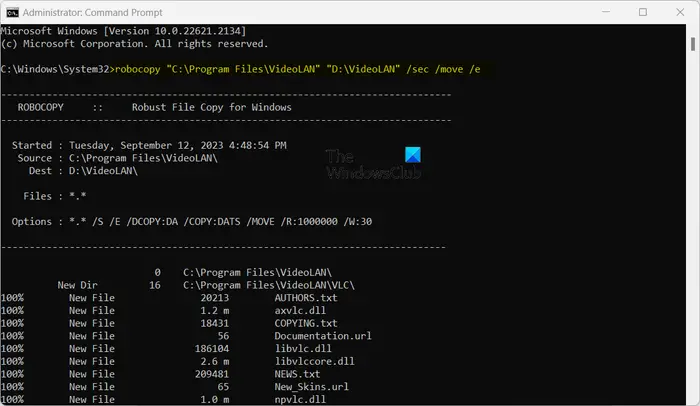
robocopy "C:\Program Files\VideoLAN" "D:\VideoLAN" /sec /move /e
So, modify the command accordingly.
Once the command is completed, the software installation folder will be removed from your SSD drive and will be moved to your HDD drive.
However, you won’t be able to use the software or app as of now.
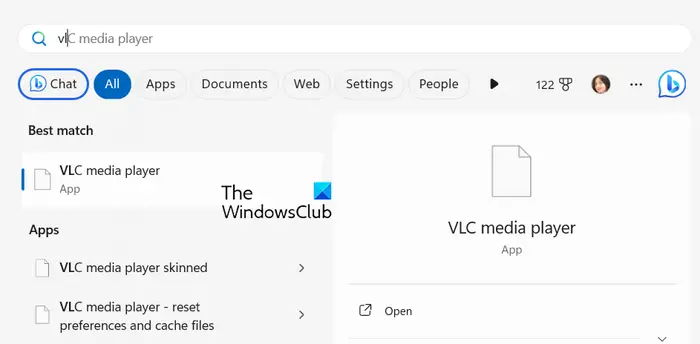
If you search for the app and try to open it, you will be prompted with errors. So, we now need to create a Symbolic link between the two directories.
To do that, we will be using mklink command. Here’s the command you need to enter in the Command Prompt:
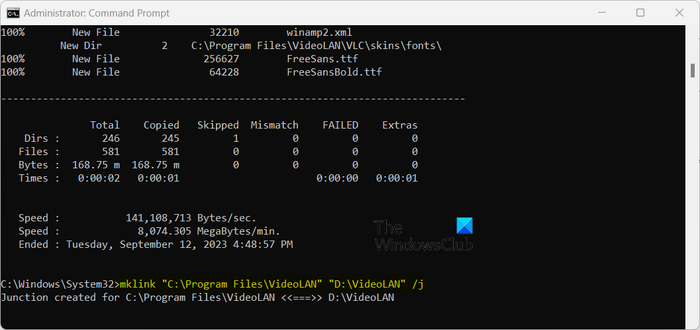
"C:\Program Files\VideoLAN" "D:\VideoLAN" /j
In the above command, /j is used to create a directory junction. You can also use /d to create a symbolic directory link.
When the command is finished, you will be able to run the moved program correctly.
So, this is how you can move your program files from an SSD drive to an HDD drive.
Related reads:
- How to move installed Programs to another drive using ApplicationMover
- How to Move Steam Games to another Drive
- How to move Games & Programs using FolderMove
- How to move Windows Apps to another Drive.
Move Program files from SSD to HDD using EaseUS AppMove Free
Another way to easily move your program files from an SSD to an HDD drive is to use a third-party application migration or mover software. EaseUS AppMove is one such software that allows you to relocate your installed applications and games from an SSD drive to other drivers including HDD, USB, etc.
This software offers both free as well as paid versions. However, there are some feature restrictions in the free version that you can unlock only by purchasing the software.
For Windows users, the Free version can be downloaded by clicking here.
From its home screen, go to the App Migration tab and press the Start button. Here, you can see connected drives on the left side pane. You can choose the SSD drive from which you want to move the program files. As you select the drive, it will display all your apps and games installed on that drive.
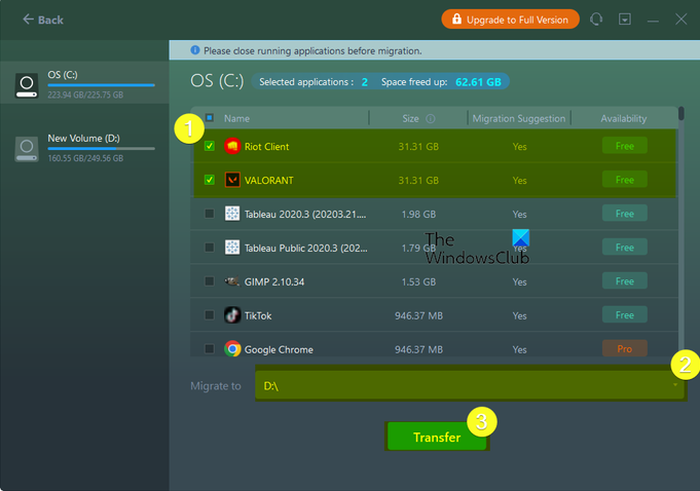
Now, select the applications that you want to move from the SSD drive. You can select more than one app at a time. When you select apps, it also displays the total amount of space that will free up from the SSD drive after moving them to the HDD. So, if you want to clear out a particular amount of space, you can do that too.
Do note that you can only migrate the apps that are listed as free on its interface. The apps tagged as Pro cannot be moved from SSD to HDD using the free version.
Next, enter the target HDD drive in the Migrate to field.
After that, click on the Transfer button and it will start moving the selected applications from SSD to HDD.
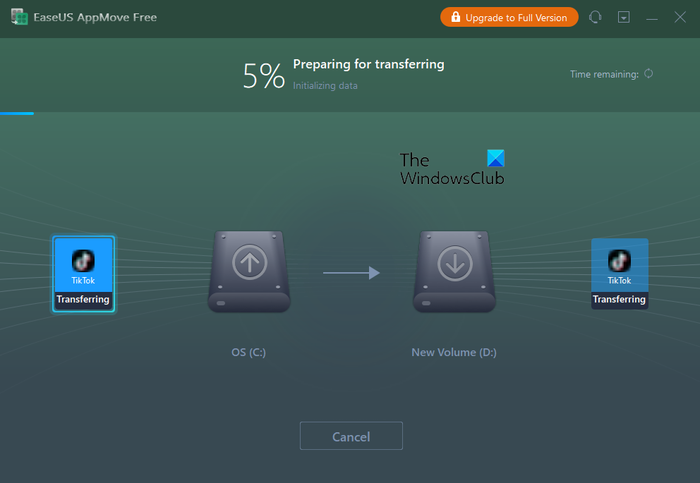
Once the process is complete, you can press the OK button.
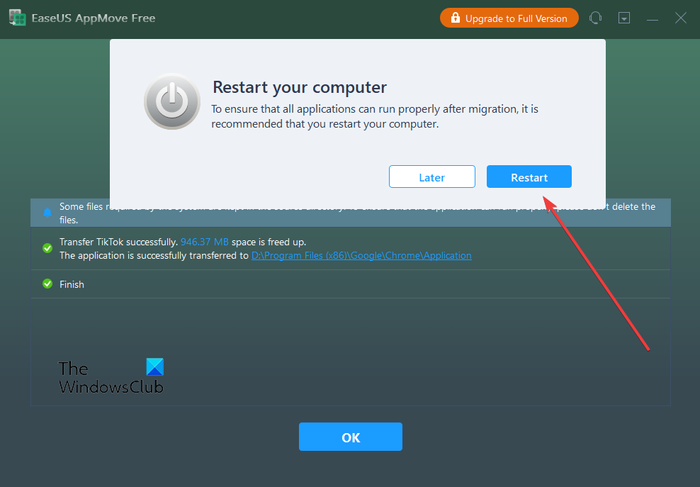
It will ask you to restart your computer to ensure the migrated applications run correctly. So, you can restart your computer and start using the moved applications from your HDD drive.
That’s it. I hope this helps!
Now read: How to transfer files and applications from one Windows PC to another PC?